p53 destabilizing protein skews asymmetric division and enhances NOTCH activation to direct self-renewal of TICs
- PMID: 32555153
- PMCID: PMC7299990
- DOI: 10.1038/s41467-020-16616-8
p53 destabilizing protein skews asymmetric division and enhances NOTCH activation to direct self-renewal of TICs
Abstract
Tumor-initiating stem-like cells (TICs) are defective in maintaining asymmetric cell division and responsible for tumor recurrence. Cell-fate-determinant molecule NUMB-interacting protein (TBC1D15) is overexpressed and contributes to p53 degradation in TICs. Here we identify TBC1D15-mediated oncogenic mechanisms and tested the tumorigenic roles of TBC1D15 in vivo. We examined hepatocellular carcinoma (HCC) development in alcohol Western diet-fed hepatitis C virus NS5A Tg mice with hepatocyte-specific TBC1D15 deficiency or expression of non-phosphorylatable NUMB mutations. Liver-specific TBC1D15 deficiency or non-p-NUMB expression reduced TIC numbers and HCC development. TBC1D15-NuMA1 association impaired asymmetric division machinery by hijacking NuMA from LGN binding, thereby favoring TIC self-renewal. TBC1D15-NOTCH1 interaction activated and stabilized NOTCH1 which upregulated transcription of NANOG essential for TIC expansion. TBC1D15 activated three novel oncogenic pathways to promote self-renewal, p53 loss, and Nanog transcription in TICs. Thus, this central regulator could serve as a potential therapeutic target for treatment of HCC.
Conflict of interest statement
The authors declare no competing interests.
Figures
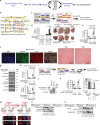
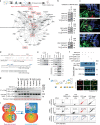
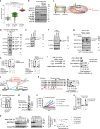
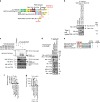
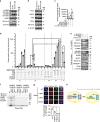
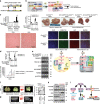
Similar articles
-
NOTCH localizes to mitochondria through the TBC1D15-FIS1 interaction and is stabilized via blockade of E3 ligase and CDK8 recruitment to reprogram tumor-initiating cells.Exp Mol Med. 2024 Feb;56(2):461-477. doi: 10.1038/s12276-024-01174-6. Epub 2024 Feb 27. Exp Mol Med. 2024. PMID: 38409448 Free PMC article.
-
NANOG-Dependent Metabolic Reprogramming and Symmetric Division in Tumor-Initiating Stem-like Cells.Adv Exp Med Biol. 2018;1032:105-113. doi: 10.1007/978-3-319-98788-0_8. Adv Exp Med Biol. 2018. PMID: 30362094 Free PMC article.
-
TLR4-dependent tumor-initiating stem cell-like cells (TICs) in alcohol-associated hepatocellular carcinogenesis.Adv Exp Med Biol. 2015;815:131-44. doi: 10.1007/978-3-319-09614-8_8. Adv Exp Med Biol. 2015. PMID: 25427905 Free PMC article. Review.
-
NUMB phosphorylation destabilizes p53 and promotes self-renewal of tumor-initiating cells by a NANOG-dependent mechanism in liver cancer.Hepatology. 2015 Nov;62(5):1466-79. doi: 10.1002/hep.27987. Epub 2015 Aug 28. Hepatology. 2015. PMID: 26174965 Free PMC article.
-
Cell fate, metabolic reprogramming and lncRNA of tumor-initiating stem-like cells induced by alcohol.Chem Biol Interact. 2020 May 25;323:109055. doi: 10.1016/j.cbi.2020.109055. Epub 2020 Mar 11. Chem Biol Interact. 2020. PMID: 32171851 Free PMC article. Review.
Cited by
-
RBM39 is a potential prognostic biomarker with functional significance in hepatocellular carcinoma.Transl Cancer Res. 2024 Apr 30;13(4):1606-1622. doi: 10.21037/tcr-23-2252. Epub 2024 Apr 12. Transl Cancer Res. 2024. PMID: 38737697 Free PMC article.
-
Asymmetric division of stem cells and its cancer relevance.Cell Regen. 2024 Feb 27;13(1):5. doi: 10.1186/s13619-024-00188-9. Cell Regen. 2024. PMID: 38411768 Free PMC article. Review.
-
NOTCH localizes to mitochondria through the TBC1D15-FIS1 interaction and is stabilized via blockade of E3 ligase and CDK8 recruitment to reprogram tumor-initiating cells.Exp Mol Med. 2024 Feb;56(2):461-477. doi: 10.1038/s12276-024-01174-6. Epub 2024 Feb 27. Exp Mol Med. 2024. PMID: 38409448 Free PMC article.
-
β-CATENIN stabilizes HIF2 through lncRNA and inhibits intravenous immunoglobulin immunotherapy.Front Immunol. 2023 Sep 8;14:1204907. doi: 10.3389/fimmu.2023.1204907. eCollection 2023. Front Immunol. 2023. PMID: 37744383 Free PMC article.
-
Analysis of the detection rate and related factors of fatty liver disease in physical examination of healthy population in Chengdu district.Medicine (Baltimore). 2023 Sep 8;102(36):e35087. doi: 10.1097/MD.0000000000035087. Medicine (Baltimore). 2023. PMID: 37682138 Free PMC article.
References
-
- Simonet WS, Bucay N, Lauer SJ, Taylor JM. A far-downstream hepatocyte-specific control region directs expression of the linked human apolipoprotein E and C-I genes in transgenic mice. J. Biol. Chem. 1993;268:8221–8229. - PubMed
Publication types
MeSH terms
Substances
Grants and funding
LinkOut - more resources
Full Text Sources
Other Literature Sources
Molecular Biology Databases
Research Materials
Miscellaneous

